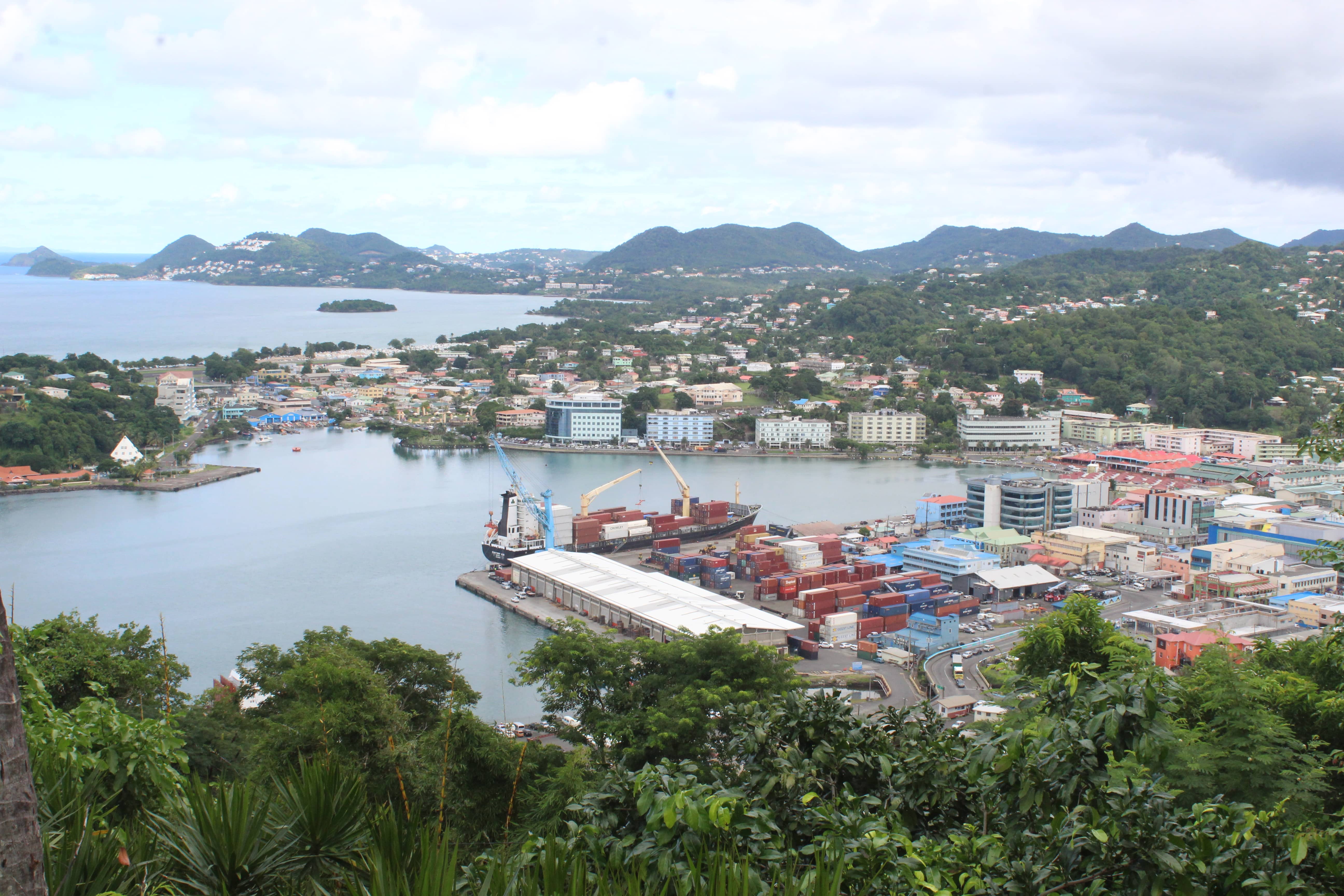Story & Photos by Stan Bishop
Castries is the capital city of Saint Lucia. Formerly referred to as Carenage, the area was renamed Castries in 1785, after Charles Eugène Gabriel de La Croix, Marquis de Castries (1727-1801), the French Minister of the Navy and Colonies.
The commercial capital of Saint Lucia, Castries boasts the island’s busiest sea port and houses nearly one-third of the island’s population. Much of the island’s history is still visible in the city through its eloquent mix of French and British architecture. Even some of the street names bear testimony to that era.
Common thoroughfares include Jeremie Street, William Peter Boulevard, Bridge Street, Brazil Street, John Compton Highway, and Micoud Street.
The Castries Harbour, one of the best deep water harbours in the Caribbean region, was originally a volcanic crater which flooded when its western wall collapsed. The harbour became famous in 1942 – during World War II — when German submarines torpedoed two ships there, killing several people. Today, cargo ships and cruise liners use it for trade and tourism while fisher-folks earn a decent living landing various species of marine life.
The complexion of the city changed forever on the evening of June 19, 1948, when The Great Fire of Castries claimed 40 blocks of homes and businesses. Overnight, 809 families were left homeless and without possessions.
A live coal iron left unattended in a tailor’s shop in the north-eastern part of the city had caused a wooden house to catch fire, resulting in the tragic loss. While no lives were lost, around 80% of the city was reduced to ashes before a firefighting squad from the United States Air Force Base in Vieux Fort eventually quelled the flames.
The fire, however, gave rise to two important outcomes. Firstly, an 18-year-old poet named Derek Walcott immortalized the tragedy into his poem, “A City’s Death by Fire”, sparking an illustrious career in literature. Secondly, over time, class prejudices were obliterated in the city, paving the way for modern infrastructure.

Notable places to visit in Castries include Derek Walcott Square, located in the heart of the city. Previously named Place d’Armes and Promenade Square, it was later renamed Columbus Square in 1892 before being renamed again in 1993 after Saint Lucia’s second Nobel Laureate, Sir Derek Walcott, who won the Nobel Prize for Literature in 1992. In the Square, you’ll find bronze busts of Sir Derek Walcott and Saint Lucia’s first Nobel Laureate, Sir William Arthur Lewis, who won the Nobel Prize for Economics in 1979.

Nearby, you’ll find the Carnegie Library, the Minor Basilica of the Immaculate Conception (which features murals by Saint Lucia’s renowned painter, Sir Dunstan St. Omer), Constitution Park, George V Park, and the Castries Central Market. Also within the city are the Saint Lucia Parliament Building, Government Buildings, Blue Coral Mall, General Post Office, La Place Carenage, Duty Free Pointe Seraphine, William George Mallet Serenity Park, and the George F.L. Charles Airport.

Banks, supermarkets, restaurants, bars, clothing stores, department stores, market and street-side vendors, and minibus and taxi drivers will all help you create a memorable visit to Castries.
For a panoramic view of the city, try the lookout spots on Morne Fortune, from where you can see a virtual microcosm of Saint Lucian architecture, topography and enviable beauty.

